Artist in Residence Program
2016 Resident Artist
ARCUS Project’s Artist-in-Residence Program received 656 applications from abroad (89 countries and regions). Following a careful screening process, Ernesto Bautista (El Salvador), Gan Siong King (Malaysia) and Yen Noh (South Korea) have been selected as the 2016 residents. The artists will participate in a residency at ARCUS Studio in Moriya, Ibaraki, for 110 days from August 25 to December 12, 2016.
As the judges for this year’s applications, we welcomed Hattori Hiroyuki, an independent curator as our guest curator and Nanjo Fumio, ARCUS Project adviser and a director of Mori Art Museum who made the selection through a process of discussion with the ARCUS Project Administration Committee.
Overview of the 2016 Selection
First, I was surprised to receive 656 applications. I have never experienced a number this large in my ten years of engagement in Artist-In-Residence programs at Akiyoshidai International Art Village (AIAV) and Aomori Contemporary Art Centre (ACAC). This is clearly the fruit of the ARCUS Project’s past history, the importance it holds as a pioneer residency program in Japan, and the expectations held by artists toward the Project.
The selection process at the ARCUS Project is unique. To give an example, a two minute self-introductory video is requested of the remaining artists for the final judging. Not only are the videos deeply interesting in themselves, but they also offers glimpses into the artists’ character and become a valuable tool for concluding my selection.
The applicants varied greatly in nationality, birthplace, region of residence, age, and expressive methods. I felt that a broad range of artists were seeking residence opportunities this time, not only artists accustomed to the residence format these ten years.
Finally, instead of simply aiming for well-completed artworks or clear objectives for residence production, I valued the artists’ individual humanity and the possibilities for discovery and change they might obtain from a residence. On this basis, I chose three artists I felt could work together in creating the process.
(Guest curator, Hattori Hiroyuki)
Ernesto Bautista
El Salvador

Born in Santa Ana, El Salvador in 1987. Lives and works in San Salvador.
Ernesto Bautista’s major exhibitions include “LITTLE STORY OF DEMOCRATIZATION OF FEAR” (The Museum of Man, Tegucigalpa, Honduras, 2015), “BIENNIAL OF THE FRONTIERS” (The Museum of Contemporary Art of Tamaulipas, Tamaulipas, Mexico, 2014), and “X” (Museum of Art of El Salvador, San Salvador, El Salvador, 2014). Bautista has participated in artist-in-residence programs in many regions worldwide, including the United States (Santa Fe Art Institute), China, Canada, Colombia, and Mexico. Raised amid social and political instability in El Salvador, he is deeply conscious of the violence, death, and war around him and feels compelled to investigate the essential meaning of human existence and life. Taking blood, bullets, fire, human bones, knives, and other objects evocative of death and violence as his media, he creates sculptures, installations, and video works that explore the problems of society and politics.
Selected Works
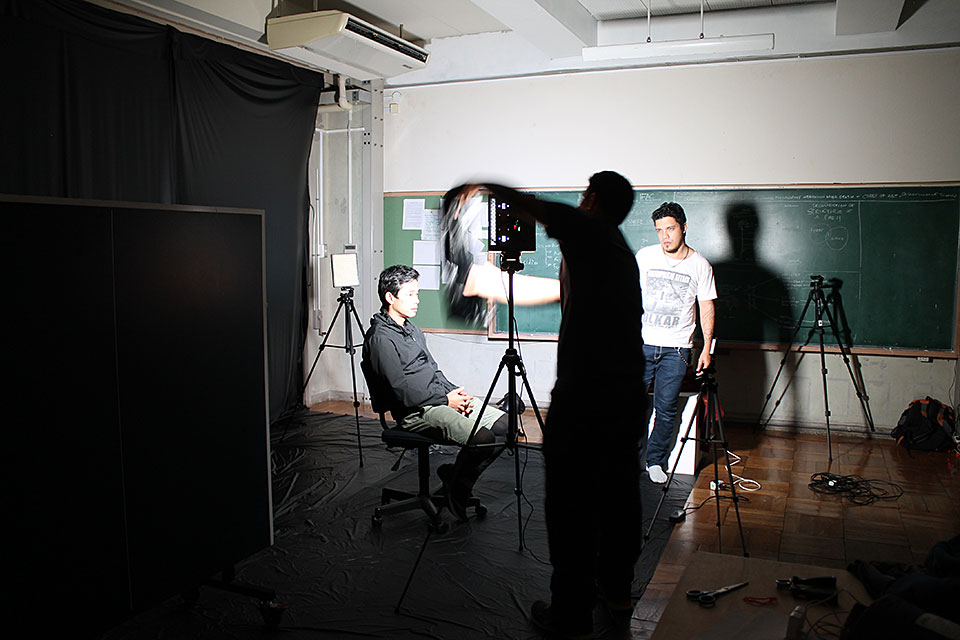
Lighting test for shooting interview
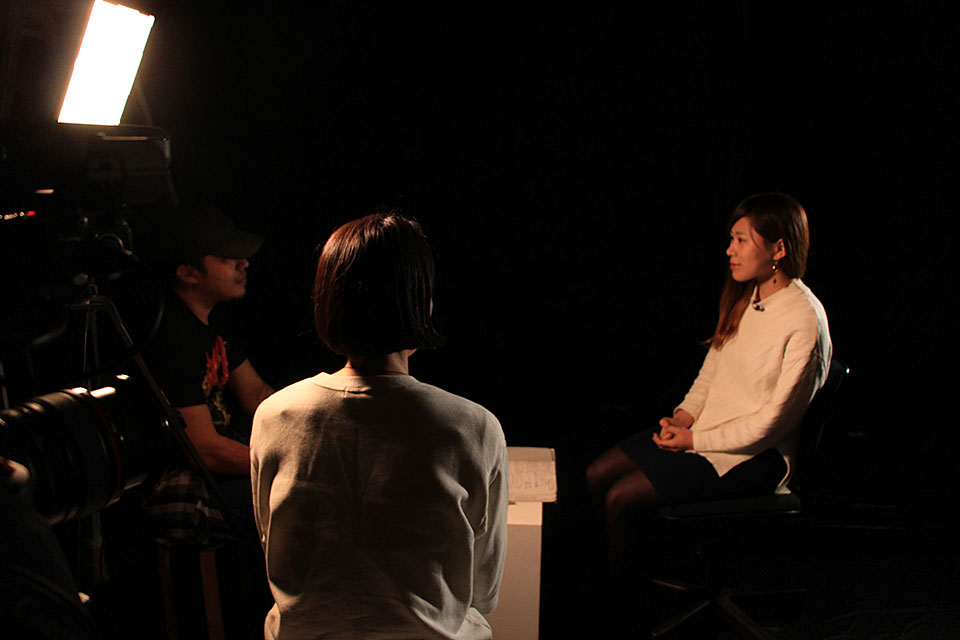
Interview at the studio

Interview with bonsai artist Morimae Seiji

Editing the film
Open Studio
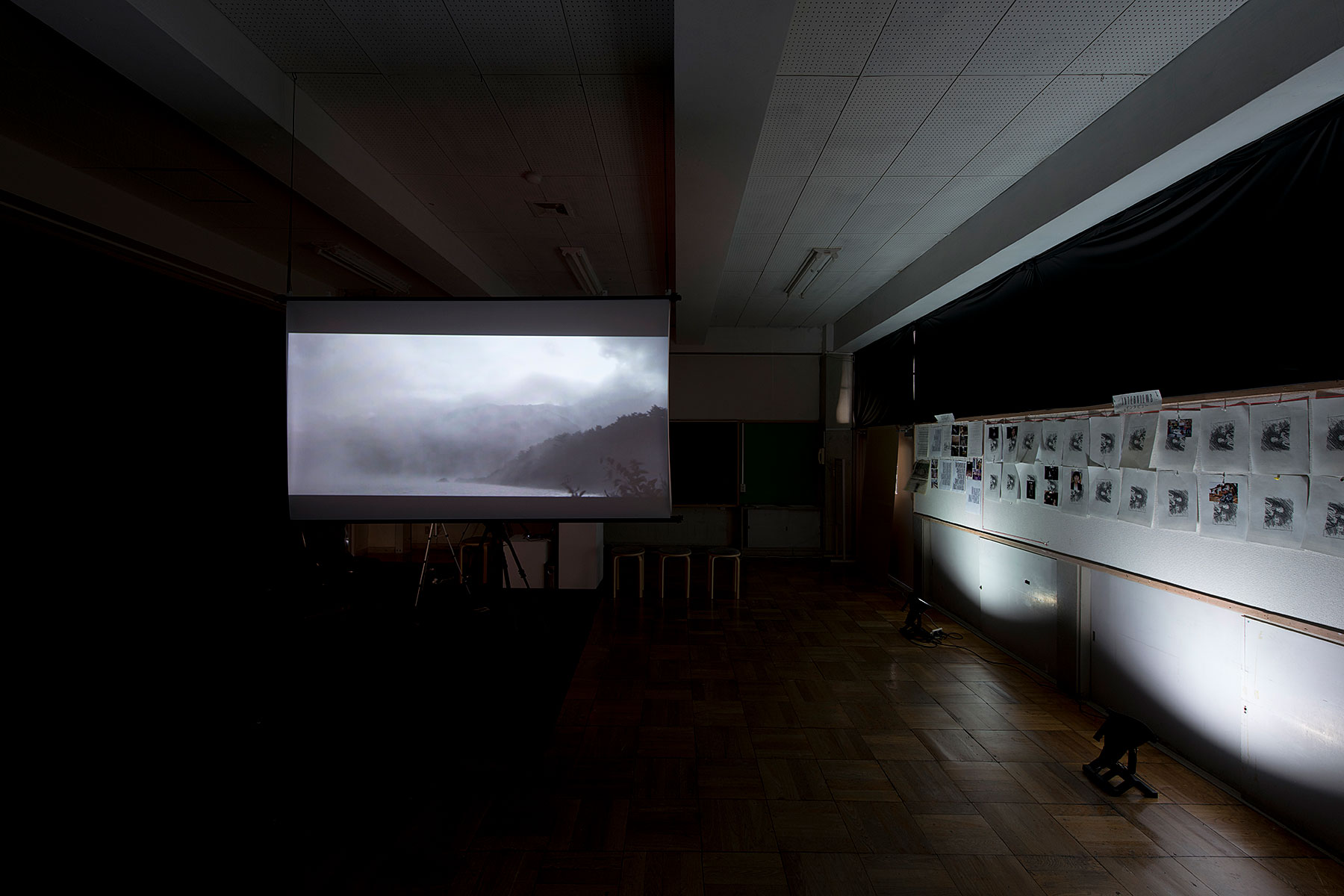
The infinite memory
2-channel video installation
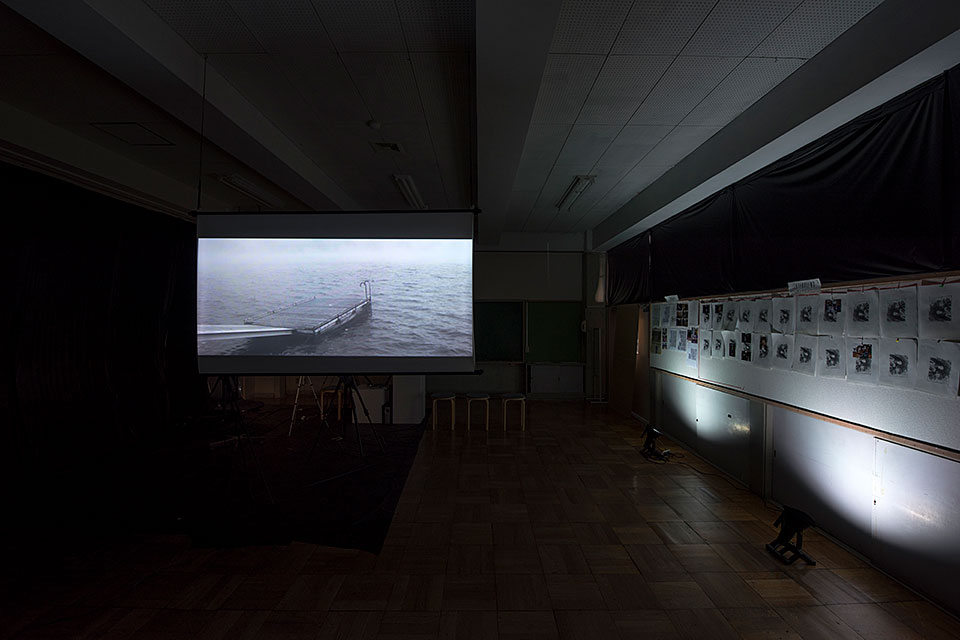
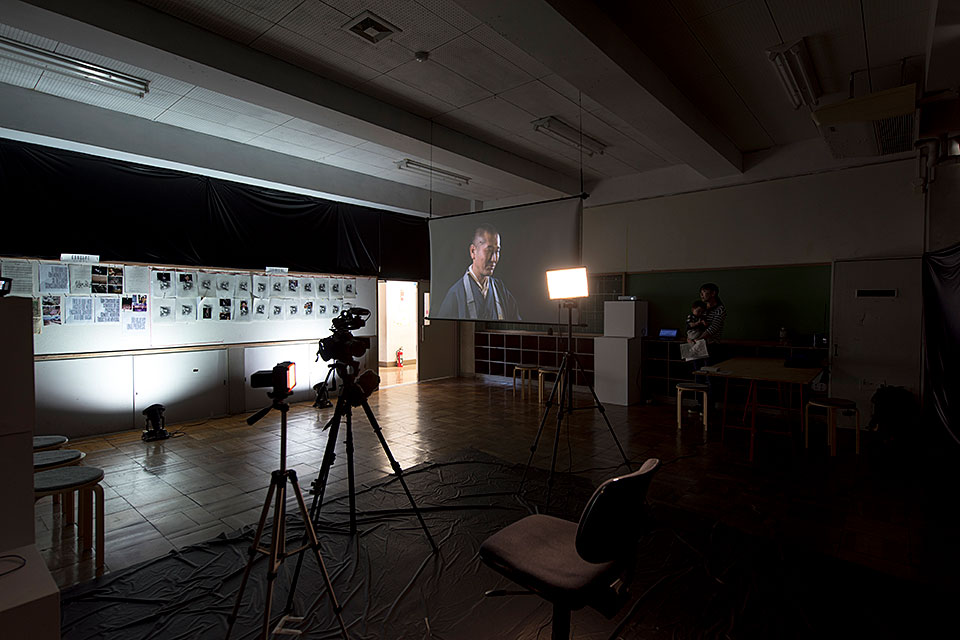
Artist Statement
As a Salvadoran in Japan, it is hard to measure the changes and new perspectives that triggers on me. I have to say that this experience is more than a pivotal point in my case, not only for the professional network, the professionality and knowledge of 23 years ARCUS has of being active on this contemporary art journey, or the change of context (is my first time in Japan) this means to me, but also the opportunity to develop one of my more experimental and heavy projects so far and the faith ARCUS has put on me are invaluable.
I can say I appreciate and treasure this 110 days as the most relevant on my career so far. The projects I’m working and the connection and collide between my country situation and the Japanese philosophy are creating new ways of rethink my context, which is precious for me. And I hope to reflect that in my output on the upcoming months (and years) as well.
Reason for Selection
Bautista is straightforward in his choices of media and creative themes, and to that extent, he expresses his concerns with vivid clarity. Moreover, because his artworks are closely linked to his own background and his creative motives are clear, his earnest intent to express and communicate his thoughts is strongly felt. While young, he is richly experienced internationally in exhibiting and doing residencies, yet he had no previous experience of Japan. For this reason as well, I felt him suited to be the ARCUS Project’s first invitee from El Salvador. (Guest curator, Hattori Hiroyuki)
Gan Siong King
Malaysia

Born in Johor, Malaysia in 1975. Lives and works in Kuala Lumpur.
In 1996, Gan Siong King received his diploma in fine arts with a major in oil painting at Malaysia Institute of Arts. His major exhibitions include “The Horror The Horror” (Art Printing Works Warehouse, Kuala Lumpur, Malaysia, 2016), “Looking Ahead” (Fergana Art Space, Penang, Malaysia, 2015), “The Pleasures of Odds and Ends” (FEEKA, Kuala Lumpur, Malaysia, 2014), and “Contemporary Rhetorics” (Valentine Willie Fine Arts, Kuala Lumpur, Malaysia, 2010). Gan is actively producing and showing artworks, primarily in Malaysia. Valuing a sense of “play” in his works, he explores such themes as laughter, humor, and joy. The works themselves, however, are not so much sensuous as conceptual, and they investigate primeval painting compositions. In recent years, Gan has undertaken a self-curated project in which he defines the production of an exhibition, itself, as an artwork. Painting 12 identical portraits of one model, he gives each portrait a different title as a means of investigating the ambiguity of individual identity and the relationship between identity and context.
Selected Works

Shooting harvest of soba

Presentation to the visitor

“Meeting People is EASY!!”

Shooting Moriya Soba-Uchi Club
Open Studio

yarimoriya
A series of videos on Instagram


Artist Statement
During my residency, I want to look, listen, live and develop my video work.
I’m currently working on 2 projects, one is a short 20 minutes video essay, made in collaboration with a citizen of Moriya. While the process will take us where it may, our departure point will revolve around ideas of work and home.
The other is an on-going series of micro video essays of moments from my residency. I’ll be making and uploading these micro videos throughout my stay and they are currently accessible on Instagram via the username “yarimoriya”, do check it out and please share, cheers.
Reason for Selection
At 41 years of age, Gan is an established artist steadily building a career in Malaysia. Because he has had few opportunities for working or showing his work abroad, however, a residence in Japan, I felt, would give him a chance to make new discoveries and achieve change. His artworks, themselves, which are refined and complexly structured and extremely high in quality and finish, have a strong appeal. Finally, he also impressed me with his honest stance in pursuing the essential meaning of art and the great enthusiasm he brings to this residence program. (Guest curator, Hattori Hiroyuki)
Yen Noh
South Korea

Born in Daegu, South Korea in 1983. Lives and works in Vienna, Austria.
Yen Noh in 2016 earned her Transarts master’s degree at the University of Applied Arts Vienna. Her major projects include “Aveugle Voix”, (das weisse haus, Vienna, Austria, 2016), “To bite the tongue. Swallow. Deep. Deeper”, (21er Haus, Vienna, Austria, 2016), and “Voice Over Three, Part I: The First Letter”, (Heiligenkreuzhof, Vienna, Austria, 2014). In 2013 she took part in the residence program Glogau AIR (Germany). As a South Korean residing in Europe, Noh takes language and translation as her themes in producing installation and speech-performance, two of which relevantly face each other in a space. In such works, she examines the interpretation of Western texts in non-Western cultural spheres and ponders the effect that translation and interpretation—with the many misreadings and misunderstandings that occur— had on modernization. In recent years, taking Walter Benjamin’s German-language text, The Task of the Translator, as a motif, she employs translation in an endeavor to think about the problems of the post-colonial period.
Selected Works
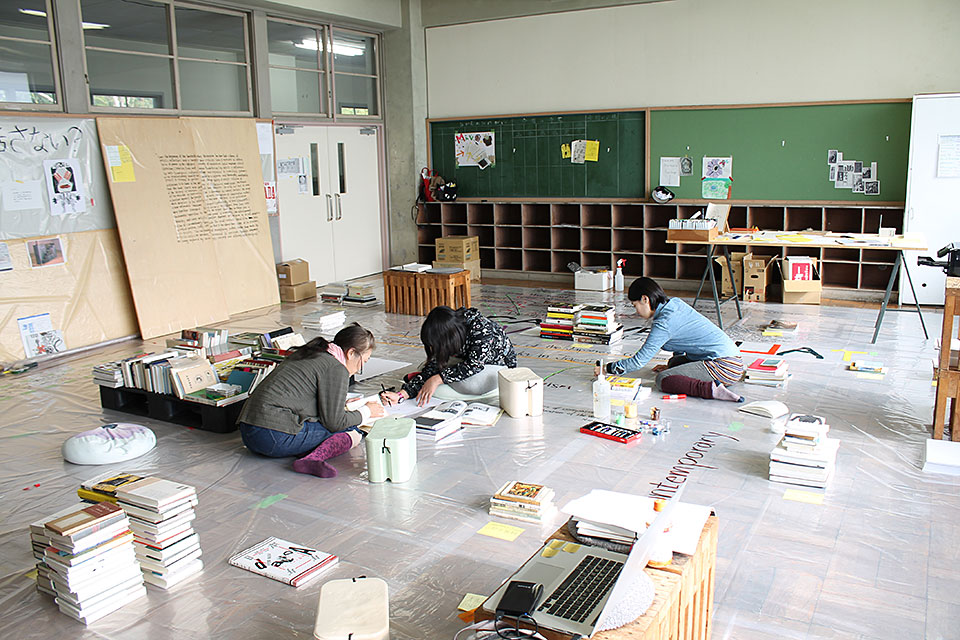
6 days “Librarying” at Open Studios

Collection of books related to the open proposal with cooperation of the participants and Tokyo University of the Arts, University Library

Interview with Omuka Toshiharu at University of Tsukuba

Interview with Oda Yoichiro
Open Studio

CAN WE TALK ABOUT MAVO ? – A Makeshift Platform of the Japanese (Contemporary) Art Topography for All Dada in Japan
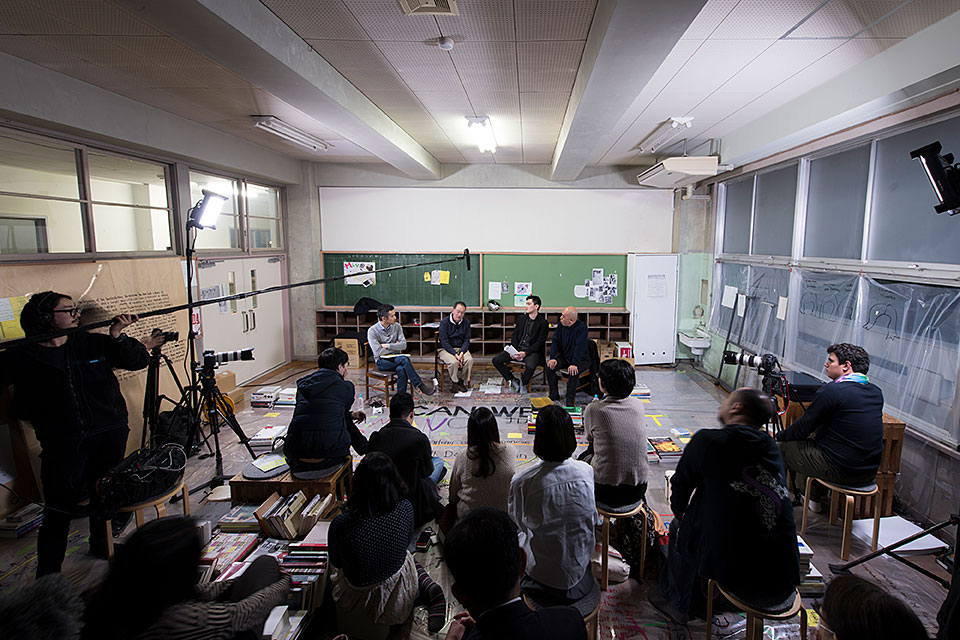
Panel discussion organized by the artist

Panelist, Uesaki Sen reading aloud “Declaration of MAVO”
Artist Statement
How have archive materials become archival? More specifically how have they been transformed while databased, proceeded and institutionalized to the future?
With the question I look for a gesture with which they walk out of the provided collection of information towards a new space: it is a slow motion of withdrawal of a historical structure.
During the residence in Japan I particularly research on the artists of avant-garde in Japan and South Korea and the archives of which during the Japanese occupation of Korea in the 1920-30s. The ephemerality of the avant-garde bound with a certain historical circumstance will be examined for an experimental intervention in which an actual event-of-things becomes virtual.
Reason for Selection
The problems related to absorbing Western culture through language and translation that Noh deals with as a Korean are unavoidable problems for Japanese, as well, and are a theme easily shared by Japanese artists. I also admired her stance of thoroughly investigating one motif in a continuous manner, employing different methods. Despite her broad experience in Europe, she does not have extensive experience in Asia (other than in Korea). Hence, I judged that residing in a neighboring country with a different language will give her a chance to make important discoveries useful in thinking about language and translation. (Guest curator, Hattori Hiroyuki)